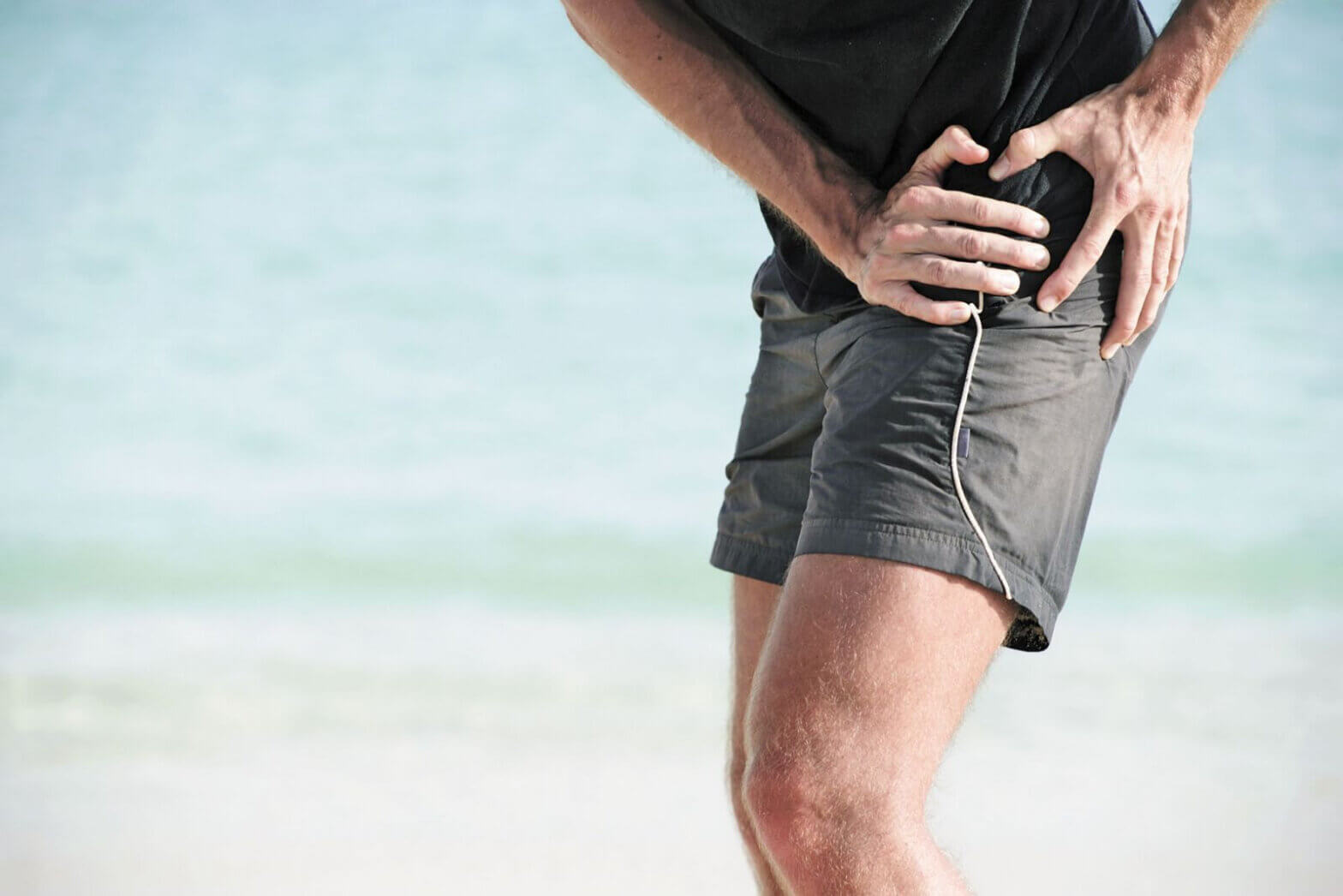Have you ever heard of the IT band? The iliotibial (IT) band is a thick band of tissue that runs from the hip down the side of the thigh (femur) and across the knee joint to the lower leg (tibia). Underneath the IT band lies a fluid filled sac (bursa) that allows the tissue to glide over the bone with minimal friction. Normally, the IT band keeps the knee stable and assists in movements of the hip. However, when the IT band is tight, irritation and inflammation can occur. This is due to the excessive friction or contact between the IT band and the femur caused by repetitive bending and straightening of the knee. As a result, IT band syndrome (ITBS) is most commonly seen in long distance runners, cyclists, and other athletes who rely most on that type of movement to participate in their respective sports. ITBS involves many supporting structures, and can also be caused by poor alignment that causes the IT band to become excessively taut (for example, bowed legs, running or pedaling with toes pointed inwards, and differences in leg length). Additionally, hip and core weakness or poor flexibility of the associated muscles can contribute to ITBS.
What does ITBS Feel Like?
ITBS may present as one or multiple of the following symptoms:
- Aching or burning pain on the outside of the knee that may spread up the thigh or to the hip
- Sensation of popping or snapping on the outside of the knee as the IT band moves over the knee with bending and straightening
- Pain that is worst immediately before or after your foot strikes the ground
- Warmth, redness, or swelling on the outside of the knee
- Pain going up or down the stairs, or moving from sitting to standing
- Limited motion at the knee joint
How Can I Prevent ITBS?
- Avoid running on uneven ground or hills
- Replace your running shoes before they are worn out
- Run on both sides of the road → Running on only side causes one leg to always be downhill, forcing the pelvis to tilt and create an effect similar to that of a leg-length discrepancy
- Ensure you stretch your entire lower extremity before and after activity → Pay close attention to the hips, thighs, and hamstrings
- Don’t ramp up your training too quickly → Increase gradually
- Allow adequate time for rest between training sessions to reduce the likelihood of overuse
What If I Already Have ITBS?
There are many different conservative treatment strategies that can be used to relieve the symptoms of ITBS, such as limiting or modifying activities, applying ice and compression, and using over the counter medications or corticosteroid injections for pain relief. Physical therapy is another conservative treatment option that has been shown to be effective in the treatment of ITBS and its associated impairments. A physical therapist will develop a personalized plan of care to help you achieve your goals through a combination of strengthening, stretching, manual therapy, therapeutic modalities, functional training and education.
If you are experiencing symptoms of ITBS that interfere with your ability to participate in your favorite sports, hobbies, or everyday activities, physical therapy may be able to relieve your pain and improve your overall function. Call Respire Physical Therapy at 703-671-1871 or click here to schedule an evaluation and get back to doing what you love pain free!
Tags: falls church va, Arlington va, Alexandria va, springfield va, Annandale va, it band syndrome, Physical Therapy, physical therapist, choosept, sport injury, ptworks



